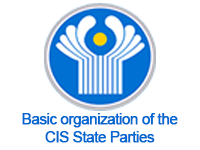
S.U. Umarov was born on August 24, 1908 in the city of Khujand. His father dies at an early age, so he is brought up in a children’s commune. At the end of the primary school (1923) moved to Samarkand, where education continued at the Uzbek Institute of Enlightenment, and then naturally – at the Faculty of Mathematics of the Uzbek Academy, after graduation, which in 1930 became one year.
In 1933, SU Umarov was sent to Leningrad to study for a postgraduate degree at the Institute of Physics and Technology of the Academy of Sciences of the USSR, which was headed by a well-known scientist A.F. Ioffe.
The talent of the experimenter, a broad scientific outlook, the ability to set tasks and achieve clarity in their decisions, as well as a large number of ideas proposed by A.F. Ioffe, created a special atmosphere in the university.
The atmosphere of such enthusiasm, democracy in communication between employees and the special world of science attracted Sultan Umarovich so long that physics became his vocation, the point of application of his strengths and abilities.
In 1936, Sultan Umarov published the first scientific work “Brownian movement of the underlying rod and the transverse rotation of the bridge” and in the same year defended his dissertation for the degree of PhD of Physical and Mathematical Sciences.
In 1957, after the end of the first president of the Academy of Sciences of the Tajik SSR, Sadriddin Aini, the scholars of Tajikistan unanimously elected S.U. Umarov an academician of the Academy of Sciences of the Tajik SSR, and its president.
This was the period when only scientific research began in the field of exact sciences and when there was a shortage of scientific personnel. Being the President of the AS Tajik SSR, he makes a significant contribution to the further development of science in Tajikistan. Questions of preparation and placement of scientific and scientific-pedagogical staff occupy a special place in his activity. It is in these years that the development of exact sciences in the republic begins, especially in the physical and mathematical, the creation and strengthening of the material and technical base and the training of highly qualified personnel. With this purpose on the initiative of S.U. Umarov was selected and directed a large group of talented youth in Moscow, Leningrad, Minsk, Novosibirsk, Baku and other scientific centers of the country.
Sultan Umarov simultaneously headed the Department of Physics and Mathematics at the Academy of Sciences of the Tajik SSR and the head of Department of Theoretical Physics of the Tajik State University.
The widely erudite scholar was not limited to research in the field of statistical physics, which began in his postgraduate years. Questions of physical electronics, physics of semiconductors, physics of cotton occupy a definite place in the creative biography of the scientist.
There is no doubt about the contribution of Sultan Umarov and the development of public science, the productive forces of the republic, the accelerated application of mathematical methods in economic research.
Important milestone in the scientific and organizational activity of SU Umarov, was created in 1964 by three new research institutes in the structure of the Academy of Sciences: Institute of Physics and Technology, Institute of Biophysics and Physiology and Institute of Economics.
Institute of Physics and Technology – the real child of Sultan Umarov, carrying the right of the name of its creator, includes in its structure the International Center for Nuclear and Physical Research, Department of Nanomaterials and Nanotechnology, Center for the study and research of renewable energy sources, the Sector of Theoretical Physics and 6 laboratories, which conduct research on the most important problems of modern physics.
In the near future, it is planned to develop such parts as physics of cosmic rays, radiation ecology and material science in extreme conditions at high-altitude landfills in the Eastern Pamirs, Physics of condensed state and creation of new materials. Other developing directions, such as the physics of the atmosphere, physical and technical problems of energy, optics, quantum electronics are also relevant and important for the efficiency of the results obtained and their implementation in the national economy.
Time remoteness does not erase the freshness of those impressions and memories that each employee who had the happiness of communicating with Sulton Umarov retained. They remember with great love and appreciation how, despite his busyness, he always found time to get acquainted with the work of each laboratory, participated in the discussion of the results, raised the creative spirit of the staff with his advice, generously conveyed his rich experience, inspiring everyone with his deep conviction in the creative power of science. Today, when special emphasis is placed on attracting creative youth to science, knowledge of the history, place and significance of science in society, acquaintance with the life of such scientists as Sulton Umarovi, will enrich the spiritual world and worldview of young people entering uncharted paths of science.


